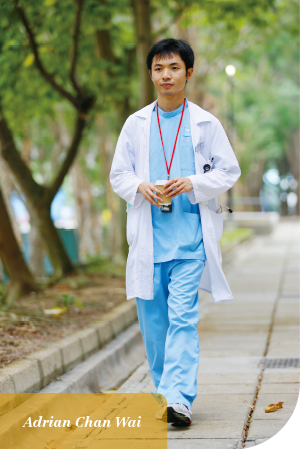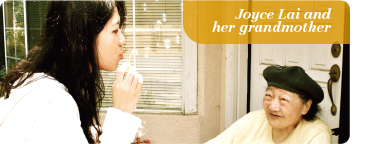HKU medical students are recognised for their high degree of competence and their communication skills. But can there be more? Is there a balance to be struck between knowing the disease and treatment and understanding what patients are going through?
These questions are behind the new Medical Humanities curriculum, which became mandatory for all medical students from September 2012. The curriculum seeks to deepen students' grasp of the nature of pain and suffering through five themes: narrative medicine in which the focus is on individual doctors' and patients' stories; culture, spirituality and healing; death, dying and bereavement; the history of medicine; and humanitarianism.
"A lot of our students want to know the right answer," says Assistant Professor Dr Julie Chen, who has overseen the development of the curriculum together with Professor L.C. Chan. "We want them to get more comfortable with uncertainties and get more attuned to the person behind the white coat and the person in front of them, so they see the person behind the disease."
The curriculum was developed over several years and has been tested in numerous pilot programmes. Students who participated in those programmes say they were very beneficial.
Joyce Lai took part in a programme exploring visual narratives of illness in her third year. In one activity, students were asked to bring in a photo showing illness, suffering or well-being and reflect on it. She selected a photo of herself with her grandmother, who suffered heart and lung diseases as well as Alzheimer's.
"Because she had Alzheimer's, she forgot all about her other diseases and she woke up happy every day," says Joyce. "When I studied Alzheimer's I thought it was horrible, but when I saw it in person it baffled me because it wasn't terrible in the least – it was probably the one thing the drugs couldn't cure but it cured her [suffering]."

![]() "One of the things the course taught me was to try to appreciate that each of these 'cases' is someone with a family, work and life story."
"One of the things the course taught me was to try to appreciate that each of these 'cases' is someone with a family, work and life story."
She said the course also helped her to see a more humane side to her classmates and reignited the passion she felt for medicine at the start of her studies, which was being crushed under the weight of work required. "It instilled the fire back," she says.
 Adrian Chan Wai, who graduated in 2012, participated in a death, dying and bereavement pilot programme in his third year. He is now doing his internship and said the lessons of the programme still lingered despite the demanding conditions under which he worked.
Adrian Chan Wai, who graduated in 2012, participated in a death, dying and bereavement pilot programme in his third year. He is now doing his internship and said the lessons of the programme still lingered despite the demanding conditions under which he worked.